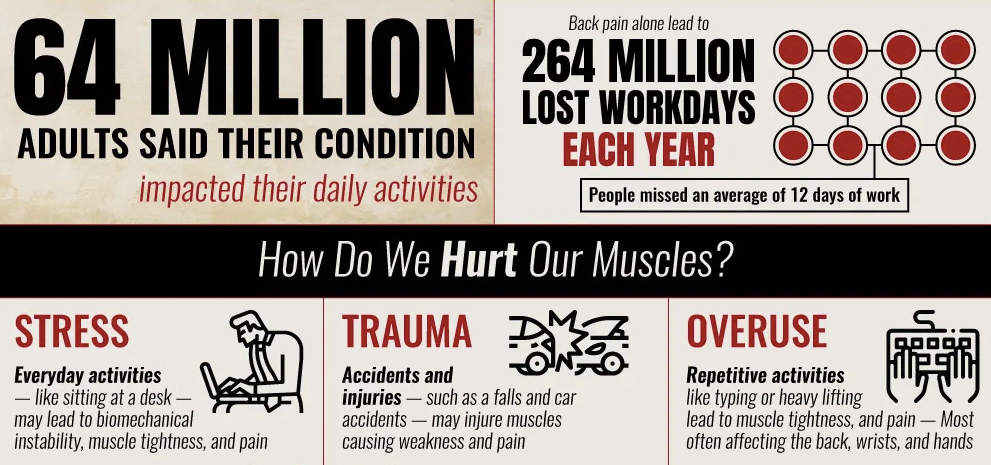Can distance learning lead to musculoskeletal disorders?

In a 2017 study conducted by the Global Burden of Disease, it was found that musculoskeletal conditions are main contributors to disability worldwide. The main contributors? Everyday activities like sitting at a desk or repetitive typing.
Since the pandemic, more teachers and students are working and learning from home than ever before. Although distance learning learning is a great alternative for keeping students learning and teachers working, its heavy reliance on technology and deskwork may lead to long-term muscle injuries.
Sitting at a desk may lead to biomechanical instability, muscle tightness, and pain. On top of that, repetitive activities, such as typing or heavy lifting, can lead to muscle tightness and pain. Most often, this pain is felt in the back, wrists, and hands.
Although distance learning primarily affect those 65 years of age, they can affect people of all ages. 36% of those aged 18-44 suffer from musculoskeletal disorders, making students mildly susceptible to injury.
Typically, muscle weakness is easy to spot. Typical symptoms include:
- Sudden pain,
- Soreness and swelling,
- Tightness and limited movement range, and
- Stiffness, spasms, or weakness.
In the event you display these symptoms, it’s crucial to seek care. Even minor issues can lead to long-term injuries. Stress, trauma, and overuse can cause muscle inflammation and pain, which can lead to progressive weakness, increased susceptibility to injury (such as falls), and degenerating strength and dexterity.
Distance learning has proven to be extremely beneficial for education amidst the pandemic, but how is it impacting physical health for students and teachers?











Responses